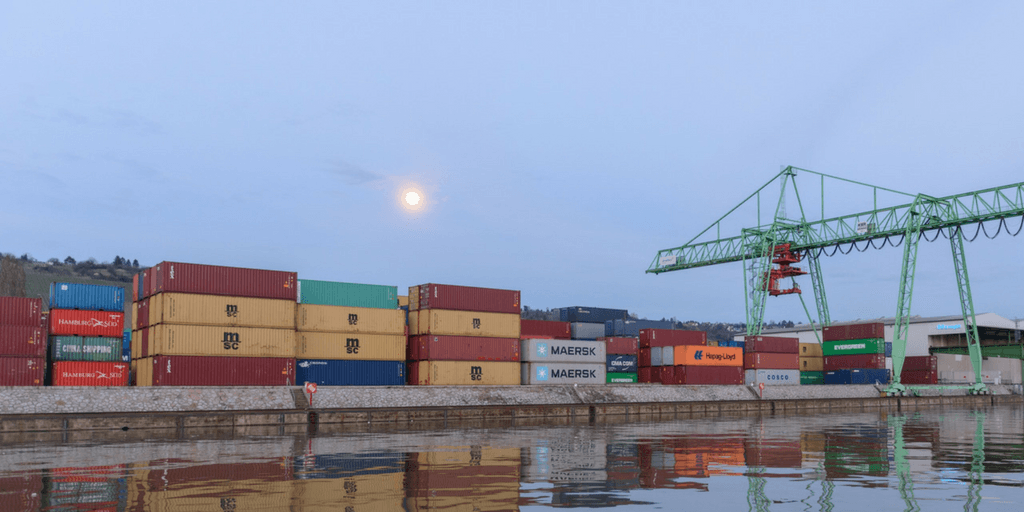

Recent Posts
Move to Azure Without Rebuilding Your VMware Environment
Agosto 15th, 2025
The Public Cloud Imperative for 2025 and Beyond
Agosto 12th, 2025
Private Cloud, Hybrid AI and the New MSP Mandate
Julio 21st, 2025
Related Posts
Cloud Insights
Move to Azure Without Rebuilding Your VMware Environment
Agosto 15th, 2025
Cloud Insights
The Public Cloud Imperative for 2025 and Beyond
Agosto 12th, 2025
Cloud Insights, Products
Continuing Success with VMware: How Rackspace Supports Customers and Partners
Agosto 8th, 2025
Cloud Insights, Products
Continuing Success with VMware: How Rackspace Supports Customers and Partners
Agosto 8th, 2025
Cloud Insights
Private Cloud, Hybrid AI and the New MSP Mandate
Julio 21st, 2025
To help shine some light on containers, we posed questions to our #cloudchat experts last Thursday. The discussion was fast-paced and full of insights.
For the past several years, one of the most intriguing technologies in the cloud has been containers.
But while the tech has gone mainstream, many people still have a lot of questions about using containers. To help shine some light on the topic, we pose container questions to our #cloudchat experts last Thursday. As always, the discussion was fast-paced and full of insights.
Curious about what a #cloudchat is? Read our intro post.
Our team of Rackers in the #cloudchat included Rackspace CTO John Engates and cloud evangelists Kent Kingery and Eric Johnson. They were joined by Cybric’s mike d. kail, Cloud Technology Partners’ Ed Featherston, Consulted’s John Wooten and advisor Sarbjeet Johal. The group discussed the following questions:
- How would you describe container technology to someone who isn’t familiar with it?
- What is the number one benefit a business can get by using containers?
- What workloads are best suited for containers?
- Are there any reasons a company should NOT use container technology?
- What’s the biggest piece of advice, or best practice, you have for adopting containers?
- What’s the number one misconception or myth about containers you’d like to dispel?
John Engates had a great definition of containers for the lay person, as having “the separation you’d expect between the apps on your iPhone,” hiwle Ed Featherston described them as “Lego blocks for applications.”
https://twitter.com/jengates/status/908361815280832512
https://twitter.com/efeatherston/status/908361784188444673
When it comes to the benefits containers can deliver, Thomas Cameron of Red Hat said that it was hard to pick a number one. He cited business agility, speed to market and simpler operations as a few of the many good things that come with containers.
https://twitter.com/thomasdcameron/status/908363218954932224
The group was in consensus that the best candidates to immediately move to containers were those applications that are “stateless,” already broken into components/distributed (read: not monolithic apps).
https://twitter.com/efeatherston/status/908364997889314817
https://twitter.com/mdkail/status/908364841215131653
One of my biggest takeaways was from our very own Kent Kingery. He noted that while many legacy/monolithic applications may not be ready for containers, the workloads behind them certainly are. In other words, all new apps designed to solve business problems are probably strong candidates to use containers and to take advantage of continuous integration/continuous delivery.
https://twitter.com/KentKingery/status/908364998262566912
Finally, our team noted that like all technologies, containers are not a silver bullet. With them come both pros and cons, which an information technology team must thoroughly evaluate against the current state. As John Wooten put it, “No technology is the holy grail.”
https://twitter.com/w00tfoo/status/908372698396590080
If you’re curious about some of the other answers from our latest #cloudchat, explore our Twitter Moment below. If you’re looking for help understanding this or any other bleeding edge technology, look no further than the experts at Rackspace. And be sure to join the next #cloudchat on Sept. 21 at 11a.m. CST, where we’ll be talking about talent, gaining experience and the cost of expertise!
https://twitter.com/i/moments/908432781755207681
Tags:




